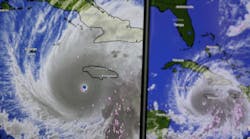Maine Officials Deny Magazine's Claim
State and local officials are not pleased with a recent Forbes magazine article that lists Short Sands Beach in York, Maine, one of the region's most plluted.
The article cited a Natural Resources Defense Council (NRDC) report that compiled water sampling data from U.S. beaches as reported to the Environmental Protection Agency.
York's Parks and Recreation Department director Mike Sullivan disagrees with the report's claim that the beaches he oversees are polluted. "We've been monitoring the beaches for five years," he said. "We've never posted a closure or a warning."
Sullivan added that the city participates in the Maine Healthy Beaches program, a partnership between the University of Maine Cooperative Extension/Maine Sea Grant, the Maine State Planning Office's Maine Coastal Program, the Maine Department of Health and Human Services, state conservation and environmental protection departments, and local municipalities. Through this program, city officials perform regular, standardized monitoring of beach water quality by, for instance, sending weekly water samples to a lab.
Scientists then test for enterococci, an indicator bacteria. All test results are posted for public viewing on Maine Health Beaches' Web site, http://mainehealthybeaches.org. If a water sample test shows a spike in bacteria levels, Maine Healthy Beaches notifies the municipality that oversees the beach to discuss additional testing and possible warnings or closures.
The dispute
Mark Dorfman, an environmental science consultant with the Natural Resources Defense Council, said, "In last year's beach report, we listed all beaches with 25 percent or greater samples exceeding the standard during the 2005 season. Despite the fact that 29 percent of samples tested in 2005 were contaminated in excess of the federal standard, the Short Sands beach manager chose not to warn the public."
According to Maine Healthy Beaches' Web site, however, beach closure is subject to more than one day's enterococci level test. The organization also considers factors including the number of swimmers at the beach, the last rainfall and past contamination problems when deciding whether to keep a beach open to the public. The ultimate closure decision lies in the hands of the beach manager, in conjunction with the Healthy Beaches Program coordinator and the state epidemiologist.
"If we see a high spike [in bacteria levels], it's after a heavy rainfall," said Sullivan. ""We automatically test again the next day, and usually it's back down. We do get periodic spikes, but it's not the norm."
Maine Healthy Beaches Program Coordinator Esperanza Stancioff praised the work of Sullivan and his staff. "York has been exemplary with our monitoring programs," she said. "As a result of implementing the beach monitoring program in York, the level of awareness in the town has increased."
And in regard to the Forbes article, Stancioff said that the cited NRDC report was based on data collected in 2005, host of a particularly rainy summer in which bacteria levels did consequently spike. "There have been no high [bacteria] scores in 2006 or 2007 for Short Sands," she said. "We are talking about a situation that happened in 2005 for many beaches in the Northeast and in Maine. Short Sands does not stand out as being at all polluted."Keeping beaches clean
Sullivan and Stancioff both encourage the public to take certain steps to help keep York's beaches clean. "Most of the beach water pollution comes from storm water runoff," Stancioff said.
Keeping baby diapers from leaking, refraining from feeding sea gulls and other wildlife, picking up after pets, disposing of trash in designated containers and using restroom facilities are ways beachgoers can help maintain clean, safe beaches.
Source: seacoastonline.com


